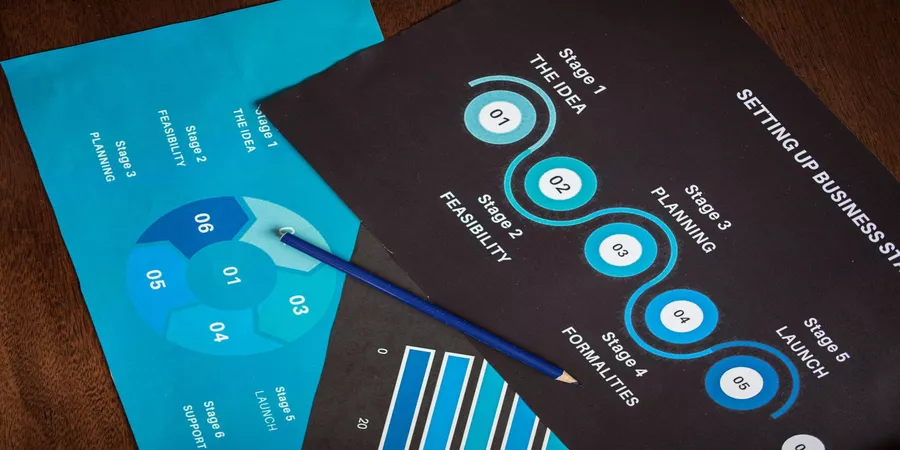Starting your investment journey can be confusing. There’s no shortage of advice, but much of it sounds complicated. If you’re feeling unsure about where to begin, that’s completely normal. Many people want to grow their savings or prepare for the future, but hesitate because they don’t want to make the wrong move. The truth is, you don’t need to know everything to begin. You just need a reliable way to learn and build confidence.
Here’s how you can start small and steady and progress meaningfully over time without putting your plans at risk:
What Exactly Are Stocks?
Stocks are shares that represent partial ownership in a public corporation. When someone buys a share, they own a small part of that company. The value of that share can rise or fall based on how the business performs or how people feel about its future. These price changes are driven by real-world events, earnings reports, and public perception. Owning shares gives individuals an opportunity to take part in a company’s success. It also means accepting that values will shift over time. For beginners, learning what a share truly represents is the first step. Once you understand the basics, it becomes easier to decide how and when to invest based on your goals.
A Straightforward Place to Begin
If you’re new to investing, starting with a platform designed for beginners can help a lot. Some services walk users through key steps like goal setting, diversification, and regular contributions. Many providers and online resources offer automated investing, clear explanations, and real-time guidance for different experience levels. They help simplify the process of selecting and tracking investments. These online platform also teaches how to manage risks and set realistic goals, creating a welcoming way to explore stocks for beginners. Instead of guessing what to do next, you can build a personalized plan that supports your progress. It’s a practical way to begin without needing to master everything at once.
Risk Is Real—But It Doesn’t Have to Be Paralyzing
Investing comes with risk, but risk doesn’t have to stop you from getting started. The idea isn’t to avoid it entirely but to manage it in a way that matches your comfort level. Short-term drops can happen, but long-term trends often smooth out those bumps. People sometimes think that putting money into the market is like guessing. In reality, thoughtful planning and steady choices usually lead to better outcomes than emotional decisions. Having a clear purpose and sticking with a strategy can protect you from panic selling or chasing quick wins. Remember: You don’t need to make perfect choices; you should just make consistent ones that match your long-range goals and personal approach.
Start With Your ‘Why’
Before making any moves, think about what you’re trying to achieve. Are you saving for retirement, a big purchase, or your child’s future? Your reason for investing should guide your decisions. Without a clear purpose, it’s easy to get distracted or second-guess yourself when things shift. Knowing your timeline, comfort level, and end goal makes it easier to stick to a plan. Some goals are short-term, while others may take decades. Your targets help determine how much risk is acceptable and what types of investments might fit best. When you’re clear on your purpose, you’re more likely to stay focused. That clarity can make the entire experience feel more manageable and worthwhile.
Balance Makes a Difference
Avoid putting everything into one stock or category. Spreading your investments across different industries, sectors, and asset types helps lower risk. This is known as diversification. If one area underperforms, another might help balance things out. That doesn’t mean buying randomly. It means choosing a mix that fits your comfort level and future plans. Index funds and ETFs are popular ways to build a variety without needing to pick individual stocks. They provide exposure to many different holdings in a single package. A well-balanced portfolio helps reduce anxiety and improves your chances of steady returns. The goal isn’t perfection. It’s creating a structure that can handle ups and downs over time.
Timing Isn’t Everything
Trying to guess the best moment to buy or sell often leads to stress and second-guessing. While it’s tempting to wait for “the right time,” this usually isn’t realistic. Even experienced investors get it wrong. Instead of watching the market daily, focus on consistency. Many people use a method called dollar-cost averaging, which means investing small amounts regularly. This strategy reduces the pressure to predict price changes and helps build habits. When you invest over time, you’re less affected by short-term movements. It’s easier to stay focused and avoid emotional decisions. Regular contributions can add up, especially if your focus is long-term and you’re committed to steady progress over flashy wins.
Simple Tools Make Tracking Easier
You don’t need complicated software or advanced spreadsheets to stay informed. Most basic platforms offer dashboards that show how your investments are doing. You can review gains, losses, and trends without technical experience. These visuals help make sense of your account without overloading you with jargon. Having a clear view helps you stay motivated and allows you to track your progress toward goals. Many apps and sites even let you set alerts and reminders so you don’t miss key updates. Starting with the right tool gives you better visibility, and when everything’s in one place, it’s easier to stay engaged. You’ll make better choices when you have clear, updated information.
Managing investments doesn’t have to be overwhelming. You don’t need to be a market expert or spend hours each day reading charts. What matters most is starting with a purpose, building a routine, and making thoughtful decisions. With access to beginner-friendly resources, clear tools, and simple strategies, you can create an approach that fits your needs. Mistakes may happen, but they’re part of the process. Over time, your confidence will grow, and so will your ability to make smart choices. The key is to begin with what you know, stay consistent, and keep moving forward at your own pace. It’s not about perfection but about staying steady and learning as you go.







